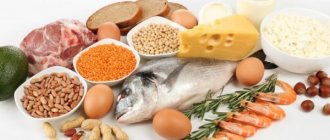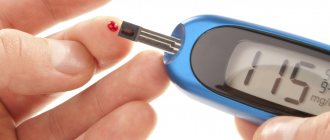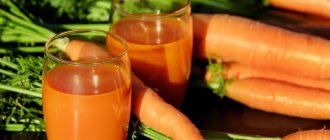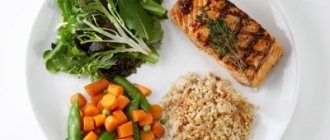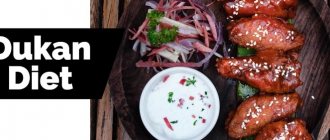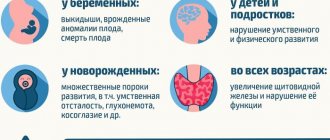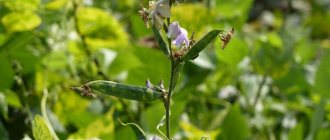Gastroduodenitis is a disease of the gastrointestinal tract, which is characterized by the occurrence of an inflammatory process in the mucous membrane of the stomach and duodenum. The disease occurs in acute or chronic form. Diet therapy for gastroduodenitis is the basis for the treatment of this disease. Following a diet allows you to relieve the inflammatory process on the mucous membrane and prevent complications from developing.
Nutrition for chronic gastroduodenitis
In case of chronic gastroduodenitis, it is necessary to avoid eating fatty, spicy and salty foods. Preference should be given to lean types of meat and fish: young beef, veal, rabbit, turkey and chicken. Salted fish, offal, goose, duck and lamb should be excluded. Nutrition should be as gentle as possible. It is preferable to boil or stew food rather than fry it.
If you have
a chronic
form
of gastroduodenitis
, then you should regularly
carry out preventive treatment
.
Treatment of duodenitis in Saratov, treatment of chronic duodenitis
Complex differentiated treatment of duodenitis in Saratov, treatment of chronic duodenitis in Saratov, treatment of patients with chronic duodenitis and gastroduodenitis with the widespread use of new reflexology techniques allows you to achieve satisfactory results even with a pronounced clinical picture of the disease! Sarklinik knows how to treat duodenitis, how to cure duodenitis, how to get rid of duodenitis.
Sign up for a consultation. There are contraindications. Specialist consultation is required.
Photo: Wacpan | Dreamstime.com\Dreamstock.ru. The people depicted in the photo are models, do not suffer from the diseases described and/or all similarities are excluded.
Related posts:
Spasm of the esophagus: treatment, causes, how to relieve, treat cardiospasm of the esophagus, esophagospasm
Belching, treatment, frequent rotten belching of air, eggs, food
Stomach ulcer, duodenal ulcer, peptic ulcer: treatment in Saratov
Chronic gastritis: treatment in Saratov, how to treat inflammation of the stomach
Duodenitis: treatment, symptoms, chronic, erosive, superficial, cactar, how to treat
Comments ()
Types of diets for gastroduodenitis:
For gastroduodenitis, diet No. 1, diet No. 5, diet No. 2 are prescribed.
Diet No. 1 is prescribed for high acidity. For gastroduodenitis with high acidity, preference should be given to pureed dishes, slimy soups, and boiled porridge with milk. Meals should be fractional, at regular intervals. It is important to chew all food thoroughly.
Table No. 2 is prescribed for gastroduodenitis with low acidity (atrophic gastroduodenitis). Meals should be fractional, at regular intervals. Solid and liquid foods are taken separately. Be sure to follow the drinking regime - at least 1800 ml. fluids per day
Diet No. 5 is necessary for all people suffering from chronic gastroduodenitis for daily nutrition without exacerbation. If you have been diagnosed with chronic gastroduodenitis, then diet No. 5 is the diet that you need to adhere to throughout your life. It will no longer be possible to return to unhealthy, fried, spicy foods, or fast food. Any violation of the diet will lead to an exacerbation of the disease.
Acute duodenitis
Acute duodenitis usually occurs in combination with acute inflammation of the stomach and intestines as acute gastroenteritis, gastroenterocolitis. Morphologically there are:
1) catarrhal acute duodenitis;
2) erosive-ulcerative acute duodenitis;
3) phlegmonous acute duodenitis.
According to the predominant clinical manifestations, various forms of duodenitis are distinguished:
1) resembling duodenal ulcer;
2) resembling chronic gastritis;
3) resembling cholecystitis;
4) resembling acute gastritis;
5) resembling appendicitis.
Acute duodenitis occurs as a result of exposure to a number of factors on the body:
1) food toxic infections;
2) poisoning with toxic substances that have an irritating effect on the mucous membrane of the digestive tract;
3) excessive intake of very spicy food, usually in combination with large amounts of strong alcoholic drinks;
4) damage to the duodenal mucosa by foreign bodies.
List of permitted products:
| vegetables | Boiled or stewed. In the form of puree or small pieces |
| Non-fat varieties of meat and fish in pureed form (minced meat) | Can be prepared in the form of cutlets, meatballs, steamed meatballs or stewed |
| Rusks, dried bread | In small quantities. Eating dry food is strictly contraindicated |
| Low-fat fermented milk products | Cottage cheese, cheese, yogurt, cottage cheese casserole, low-fat sour cream, low-sour kefir |
| Vegetable oil, butter | Can be consumed in small quantities. |
| Cereals | During periods of exacerbation, cereals should be boiled. |
General rules
Gastroduodenitis is a combined inflammation of the mucous membrane of the lower part (pyloric section) of the stomach and the upper part of the duodenum. It is the anatomical proximity of these organs, and often the commonality of etiological factors (the presence of Helicobacter ), that contributes to the secondary involvement of the duodenal mucosa in the pathological process. This disease is a type of chronic gastritis .
There are acute and chronic forms of the disease, but at the everyday level, most people by gastroduodenitis mean a chronic form of the disease, which lasts for a long time with alternating periods of remissions and exacerbations, which are perceived as “acute gastroduodenitis”.
Diet for gastroduodenitis is the most important component of the treatment process and depends on the form and type of the disease (superficial “catarrhal”, erythematous, erosive gastroduodenitis), as well as gastric pH-metry . The general principles of nutrition for gastritis and duodenitis are: maximum sparing of the mucous membrane of the compromised organ from any type of damaging factors. This is achieved by excluding from the diet foods that require long-term digestion; food is served in a homogenized state (boiled, ground, mushy), and it is also necessary to chew food thoroughly.
It is not allowed to serve food in an excessively hot/cold state. Foods that cause chemical irritation (fatty and fried foods, smoked meats, marinades, spices and sauces, canned food, raw vegetables, alcohol) are excluded from the diet; salt intake is limited.
List of fully or partially restricted products:
| Sour first courses (borscht, cabbage soup) | Irritate the mucous membrane |
| Bean dishes | Cause flatulence |
| Alcoholic and carbonated drinks | Irritate the gastric mucosa |
| Smoked products | Increase secretion and lead to exacerbation of the disease |
| Canned foods | Irritate the mucous membrane of the digestive tract |
| Hot and spicy sauces | increase the secretion of bile and gastric juice |
| Fast food, food products with flavor enhancers and chemical additives. | These foods irritate the mucous membrane and are difficult to digest |
Diagnostics
Based on the symptoms of the disease, additional instrumental and laboratory examinations are prescribed, which include:
- clinical blood test - indicates the presence of inflammation in the body (increased ESR and leukocytes);
- fibroesophagogastroduodenoscopy - a fiber optic tube with a camera and lighting is inserted into the stomach, the most informative method in which you can directly see the condition of the mucous membrane of the stomach and duodenum, the presence of erosions and their localization, if necessary, it is possible to take a biopsy (taking a tissue sample);
- Ultrasound examination (ultrasound) of the stomach - using a modern ultrasound machine, you can visualize the presence of an ulcer; it is used to exclude peptic ulcer disease;
- determining the level of acidity of gastric juice is a necessary study for choosing treatment tactics, since increased acidity in the stomach requires additional therapeutic measures;
- X-ray examination with a contrast agent (barium mixture) - the method allows you to see an ulcer filled with a contrast agent.
Nutritionist comments:
Treatment with diet is a necessary condition that must be fulfilled on the path to recovery. Not a single drug, even the most effective one, according to advertising, can completely cure you without following a diet.
“The right choice of a sanatorium is a significant step towards maintaining and increasing health. “Gorny” is a resort complex that combines the experience and knowledge of Russian and Soviet balneology. The presence of modern medical equipment and innovative installations, the professionalism of the staff and love for their work will serve as the key to extending longevity,” - head doctor of the sanatorium Alexander Olegovich Karaulov.
Choosing the right diet
Diet is a mandatory element of the treatment process for any form of this disease.
The acute form of gastroduodenitis requires adherence to a strict diet. Fasting is recommended for the first few days after symptoms of the disease appear.
In this case, the patient should drink enough water to prevent dehydration (at least 2 liters of clean water daily).
In the acute stage of the disease, you should adhere to diet number 1 or its variations. The total daily energy value in this case is 1800 kcal.
The basic principle of dietary nutrition in this case:
- reducing the amount of carbohydrates;
- salt intake should be limited to 6-8 g per day.
After the exacerbation stage, the specialist reviews the patient’s diet.
In the case of chronic gastroduodenitis, the diet involves regularly providing the body with plenty of fluids, excluding all foods that irritate the gastric mucosa, and eating food prepared by baking or boiling.
Gastroduodenitis with high and low acidity requires the organization of fractional nutrition. In the first case, the consumption of dairy products, cereals, fish, and secondary low-fat broths is allowed. Sour foods, smoked foods and preserves are prohibited.
The question of how to eat with gastroduodenitis with low acidity also requires attention.
The basis of the diet is soups made from low-fat broths, boiled cereal side dishes, sweet fruits and berries, fermented milk drinks (ryazhenka, kefir). Legumes and dried fruits are prohibited.
For gastroduodenitis with low acidity, reduce salt intake.
When diagnosed with erosive gastroduodenitis, prolonged fasting is indicated, as well as adherence to diets numbered 1, 1A and 1B. It is important to consume animal fats in strictly dosed quantities.
In the atrophic form of the disease, nutrition according to the principles of diet No. 2 is indicated. In this case, it is important to consider that liquid and solid foods should be consumed separately.
Features of nutrition for superficial gastroduodenitis
This form of the disease also requires a special diet. The diet for superficial gastroduodenitis is based on the following principles:
- consumption of low-fat fermented milk products (cottage cheese, kefir, milk);
- inclusion of boiled beets, potatoes, carrots in the diet;
- consumption of boiled or steamed meat of rabbit, chicken, as well as fish - hake, pink salmon;
- ensuring plenty of fluids. It is recommended to drink mineral waters and compotes.
The number of meals is 5-6 times a day.
What foods can you eat?
For acute and chronic forms of gastroduodenitis you can use:
- crackers, stale bread;
- pureed vegetable soups (during periods of exacerbation) or with whole pieces of vegetables (during chronic conditions);
- minced meat dishes (not fried);
- boiled offal;
- low-fat cottage cheese;
- steamed omelettes;
- broccoli;
- milk sausages (without lard);
- homemade fruit jellies or jelly;
- weak tea and coffee;
- rosehip decoction.
Sample menu for patients with gastroduodenitis
The menu for the week might look like this:
Monday. For breakfast, you can prepare rice porridge with milk and half and half water and a baked apple with cottage cheese. For lunch - vegetable soup and steamed meatballs. For dinner, cook buckwheat with boiled fish.
Tuesday. Breakfast – oatmeal with milk, berry jelly. Lunch - boiled rice and boiled meat, rosehip infusion or brewed chicory. Dinner – vegetable puree, a glass of weak tea.
Wednesday. Breakfast – low-fat cottage cheese, tea or fruit jelly. Lunch – baked meat soufflé. Dinner – buckwheat porridge with lean meat.
Thursday. Breakfast – semolina porridge and low-fat cottage cheese. Lunch – soup with rolled oats, steamed cutlet. Dinner – rice pudding, croutons.
Friday. Breakfast – cottage cheese casserole, banana, tea. Lunch – rice soup, vegetable puree, steamed cutlet. Dinner – fruit salad, rice and milk casserole.
Saturday. Breakfast – oatmeal porridge, baked apple. Lunch – buckwheat soup, vegetable puree, lean boiled meat. Dinner – stewed vegetables, baked fish.
Sunday. Breakfast - cottage cheese with strawberries, lunch - rice porridge and jelly, dinner - vegetable puree and boiled meat.
Causes of chronic duodenitis
- Intestinal dysfunction
- chronic constipation
- poor peristalsis
- adhesions
- innervation disorder
These pathologies lead to a slowdown in contractions - a deterioration in duodenal peristalsis. Stagnation of the contents causes stretching and atrophy of its walls, and also has a bad effect on the condition of the mucosa.
- Chronic stomach diseases . Chronic gastritis with high acidity leads to the fact that hydrochloric acid gradually damages the intestinal cells, leading to thinning of the mucous membrane.
- Chronic diseases of the pancreas, liver, and gallbladder lead to disruption of the flow of enzymes into the duodenum. As a result, the stability of the intestines is disrupted and its protective properties are reduced.
Predisposing factors
- unhealthy or irregular diet
- stress
- food allergy
- chronic constipation
- disruption of hormone production
- taking a lot of medications
- bad habits
If these factors affect the body for a long time, they disrupt blood circulation in the digestive organs. As a result, local immunity is reduced, which contributes to the development of inflammation.



